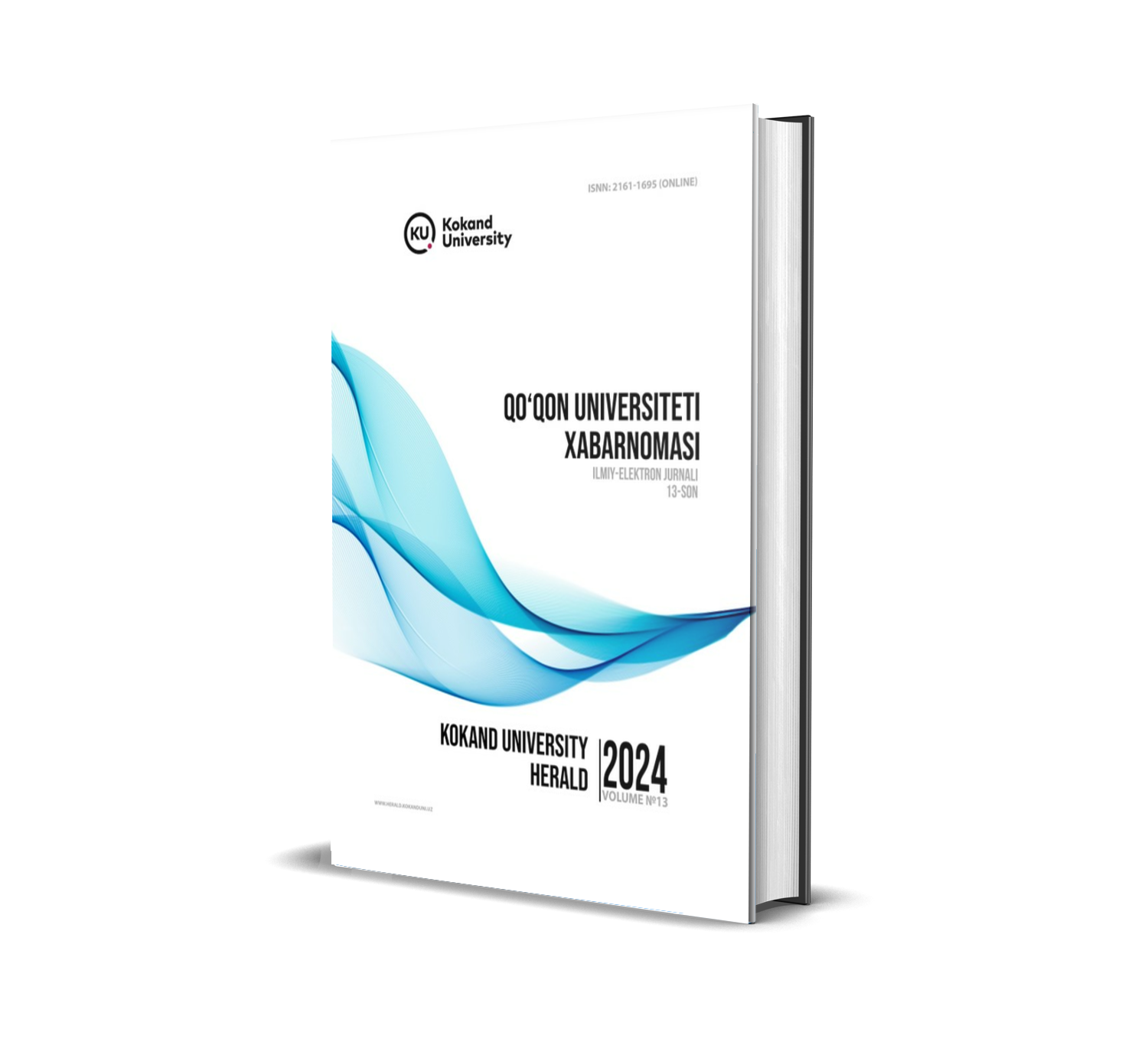LINGVOCOGNITIVE AND LINGUOCULTURAL STUDY OF MEASUREMENT UNITS IN ENGLISH AND UZBEK LANGUAGES
DOI:
https://doi.org/10.54613/ku.v13i.1080Keywords:
measurement units, lingvocognitive, linguocultural, English, Uzbek, semantic structure, cross-cultural communication.Abstract
This study investigates the lingvocognitive and linguocultural aspects of measurement units in English and Uzbek languages, highlighting the interplay between language, culture, and cognition. By analyzing semantic structures, idiomatic expressions, and cultural contexts, the research reveals how measurement units reflect the worldview of English- and Uzbek-speaking communities. The findings contribute to a deeper understanding of cross-linguistic and cross-cultural communication.
Foydalanilgan adabiyotlar:
Lakoff, G. (1987). Women, Fire, and Dangerous Things: What Categories Reveal About the Mind. University of Chicago Press.
Sapir, E. (1921). Language: An Introduction to the Study of Speech. Harcourt, Brace.
Whorf, B. L. (1956). Language, Thought, and Reality: Selected Writings of Benjamin Lee Whorf. MIT Press.
Sharifian, F. (2011). Cultural Conceptualisations and Language: Theoretical Framework and Applications. Pragmatics and Cognition, 19(1), 50-68.
Lakoff, G., & Johnson, M. (1980). Metaphors We Live By. The Journal of Philosophy, 77(8), 453-486.
Merriam-Webster Dictionary. (n.d.). Retrieved from https://www.merriam-webster.com
Ethnologue. (n.d.). English and Uzbek Languages. Retrieved from https://www.ethnologue.com
United Nations. (2015). Transforming our world: The 2030 Agenda for Sustainable Development. Retrieved from https://www.un.org/sustainabledevelopment/
Sachs, J. D. (2015). The Age of Sustainable Development. Columbia University Press.
Raworth, K. (2017). Doughnut Economics: Seven Ways to Think Like a 21st-Century Economist. Chelsea Green Publishing.
United Nations Development Programme. (2020). Human Development Report. Retrieved from https://hdr.undp.org/
World Bank. (2021). World Development Indicators. Retrieved from https://data.worldbank.org/
Nazarov , B. (2024). ENGLISH SPEAKING: TIPS FOR IMPROVING PUBLIC SPEAKING, CONVERSATION SKILLS, AND PRONUNCIATION. Talqin Va Tadqiqotlar, 2(2(39). извлечено от https://talqinvatadqiqotlar.uz/index.php/tvt/article/view/1795
Назаров Бехзод Бахтиярович. (2023). ИСПОЛЬЗОВАНИЕ СОВРЕМЕННЫХ ТЕХНОЛОГИЙ ПРИ ОБУЧЕНИИ ИНОЯЗЫЧНОМУ ГОВОРЕНИЮ В СТАРШЕЙ ШКОЛЕ. QO‘QON UNIVERSITETI XABARNOMASI, 1(1), 978–981. https://doi.org/10.54613/ku.v1i1.478
LINGUOCULTURAL STUDY OF ANTONYMS USED IN LITERARY TEXT
Nazarov, Bekhzod Bakhtiyarovich (2022). LINGUOCULTURAL STUDY OF ANTONYMS USED IN LITERARY TEXT. Oriental renaissance: Innovative, educational, natural and social sciences, 2 (6), 1115-1119.
Nazarov Bekhzod Bakhtiyarovich. (2023). THE USE OF MODERN TECHNOLOGIES IN TEACHING FOREIGN LANGUAGE SPEAKING IN HIGH SCHOOL. QO‘QON UNIVERSITETI XABARNOMASI, 1(1), 971–974. https://doi.org/10.54613/ku.v1i1.476
Bakhtiyarovich, N. B. (2024, August). LINGVOCOGNITIVE AND LINGUOCULTURAL STUDY OF MEASUREMENT UNITS IN ENGLISH AND UZBEK LANGUAGES. In INTERDISCIPLINE INNOVATION AND SCIENTIFIC RESEARCH CONFERENCE (Vol. 22, No. 2, pp. 51-53).
Nazarov Behzod Baxtiyarovich. (2024). POSSIBILITIES OF USING INTERNET IN TEACHING ENGLISH LANGUAGE. Kokand University Research Base, 211–216. Retrieved from https://scholar.kokanduni.uz/index.php/rb/article/view/313
Nazarov Behzod Baxtiyarovich. (2024). LEARNERS’ MOTIVATION AND ATTITUDE TOWARDS ENGLISH AS A FOREIGN LANGUAGE. Kokand University Research Base, 205–210. Retrieved from https://scholar.kokanduni.uz/index.php/rb/article/view/312
kizi Mukhtorova, M. M., & Djumabayeva, J. S. (2022, August). WAYS OF EXPRESSING REPROACH DEPENDING ON THE TYPE OF THE SENTENCE IN THE ENGLISH LANGUAGE. In INTERNATIONAL CONFERENCES (Vol. 1, No. 15, pp. 122-126). https://researchedu.org/index.php/cf/article/view/323
Mukhtorova, M., & Ilxomov, X. (2024). HOW TO IMPROVE LISTENING SKILLS OF BOTH ESL AND EFL STUDENTS. QO ‘QON UNIVERSITETI XABARNOMASI, 11, 84-86. https://doi.org/10.54613/ku.v11i11.964
Downloads
Published
Iqtiboslik olish
Issue
Section
License
Copyright (c) 2025 QO‘QON UNIVERSITETI XABARNOMASI

This work is licensed under a Creative Commons Attribution 4.0 International License.

